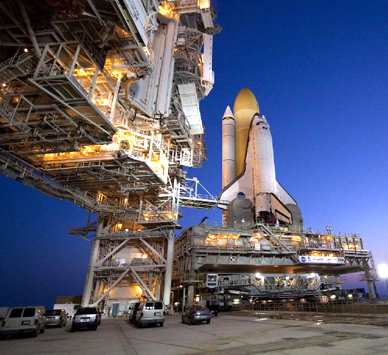FOR LEASE: Well-Used Launch Pad, Just Pick Up Payments
By Space Coast Daily // May 18, 2013
END OF AN ERA
ABOVE VIDEO: Launch Pad 39A originally was designed to support NASA’s Apollo Program and later was modified to launch space shuttles. (weshtv)
WASHINGTON, DC – NASA released a synopsis Friday announcing plans to issue an announcement for proposals for the commercial use of Launch Pad 39A at the agency’s Kennedy Space Center in Florida.
The announcement is expected next week.

Use of the launch pad by industry is designed to encourage commercial space activities along Florida’s Space Coast and fully use the historic launch complex.
Launch Pad 39A originally was designed to support NASA’s Apollo Program and later was modified to launch space shuttles. Today, the agency is modernizing nearby Launch Pad 39B to support government and commercial launches, including NASA’s heavy-lift Space Launch System (SLS) rocket and Orion spacecraft, which will provide an entirely new capability for human exploration beyond low-Earth orbit.

“We remain committed to right-sizing our portfolio by reducing the number of facilities that are underused, duplicative, or not required to support the Space Launch System and Orion,” said Kennedy Center Director Bob Cabana.
“Launch Complex 39A is not required to support our asteroid retrieval mission or our eventual missions to Mars. But it’s in the agency’s and our nation’s best interest in meeting our commitment and direction to enable commercial space operations and allow the aerospace industry to operate and maintain the pad and related facilities.”
SERVE AS PLATFORM FOR COMMERCIAL SPACE LAUNCH

Assessments conducted by NASA show Launch Pad 39A could serve as a platform for a commercial space company’s launch activities if the company assumes financial and technical responsibility of the complex’s operations and management.
Commercial use of the pad would further support NASA’s goal to encourage the commercial use of property the agency does not need for the foreseeable future.
Kennedy is positioning itself for the next era of space exploration, transitioning to a 21st century launch facility with multiple users, both private and government. A dynamic infrastructure is taking shape, designed to host many kinds of spacecraft and rockets capable of sending people on America’s next adventures in space.












